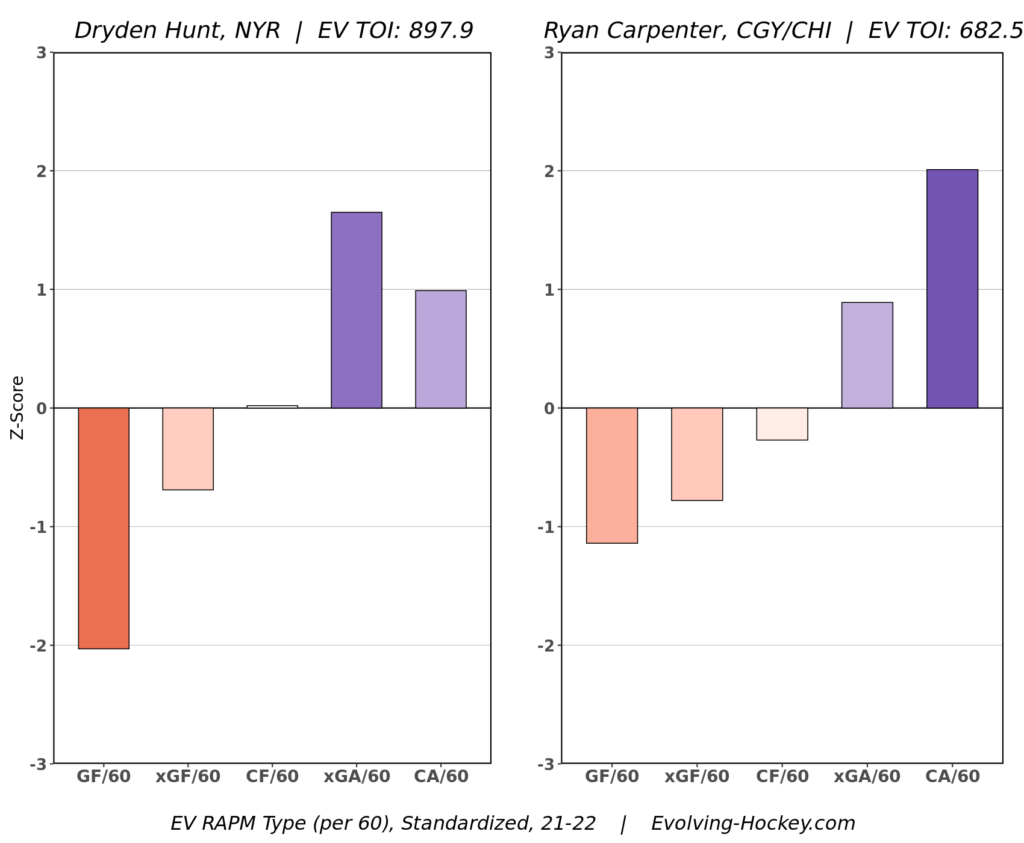
Ever since the Tampa series, the talk has been about a Rangers shutdown line, and the desperate need the club has for one. The fourth line during the playoffs was more of an energy line, which is fine, but it doesn’t have a specific role and it certainly didn’t have any effectiveness beyond Game 1 against Pittsburgh. With the offseason addition of Ryan Carpenter and the return of Sammy Blais, the Rangers may be able to construct a true shutdown line for the upcoming season.
What is the role of a Rangers shutdown line?
One of the misconceptions about a Rangers shutdown line is in its role. You hear “shutdown line” and the immediate thought process goes to limiting the opposition’s best players to no scoring opportunities. Mostly that is translated to solid defense, which implies most of the time is spent in the defensive zone, but limiting these players to the outside. In today’s NHL, that can only work for so long before players and coaches adjust.
A potential Rangers shutdown line should be able to hold its own in the defensive zone, we can’t ignore it. But the primary roles should be to stifle the breakout with a solid and consistent forecheck, getting in passing lanes and forcing turnovers, and keeping the opposition’s best offensive players pinned in the defensive zone. Therefore, you need players that are both defensively sound, but also aggressive on the forecheck and with high hockey IQs. Situational awareness matters.
This is the line that Gerard Gallant can match up against the Sidney Crosby’s of the world, specifically Crosby because the Rangers had no answer for him in the playoffs. The theory is that if the Rangers shutdown line disrupts the breakout, pins Crosby in his own zone, then they kill two birds with one stone.
Which forwards fill this role best?
The easy part of identifying a Rangers shutdown line is figuring out its role. The hard part is identifying the skaters that should be a part of it. Barclay Goodrow and Sammy Blais immediately come to mind, and for good reason. Neither has stellar defensive numbers, but they do at least survive in their own end. But it’s less about defensive possession metrics and more about style of play.
Both are tenacious on the forecheck and are good with a cycle. Goodrow was the glue of the Rangers 4th line in the playoffs until injuries started to creep up. He gets into the passing lanes on the forecheck, as does Blais. Neither are going to wow you with quick transitions and goals off turnovers, but they are capable of potting a few.
Carpenter wins faceoffs and is solid defensively. He does a masterful job of limiting both quantity and quality against, and these numbers from last year on an atrocious Blackhawks team are impressive. He, like both Blais and Goodrow, isn’t really an offensive powerhouse, but he would round out Goodrow and Blais to form what could be a solid Rangers shutdown line.
But don’t discount Dryden Hunt. There was a lot of Hunt fatigue because he was miscast as a 2RW for most of last season, but there’s a reason why Chris Drury gave him two years. His defensive numbers are right up there with Carpenter’s, and he also plays that high energy forechecking style.
Right off the bat, that’s four forwards capable of filling the Rangers shutdown line role. Ryan Reaves is less of a shutdown player and more of an energy player, and he does factor into this equation. Make no mistake, Reaves will get games in certain matchups, likely over Hunt.
Adding a true Rangers shutdown line to go with three true scoring lines, which is what the club may have, truly rounds out the roster as they go for another Stanley Cup run. The 2022 playoffs may have been a teaser of what’s to come.
Share:
More About:Offseason

